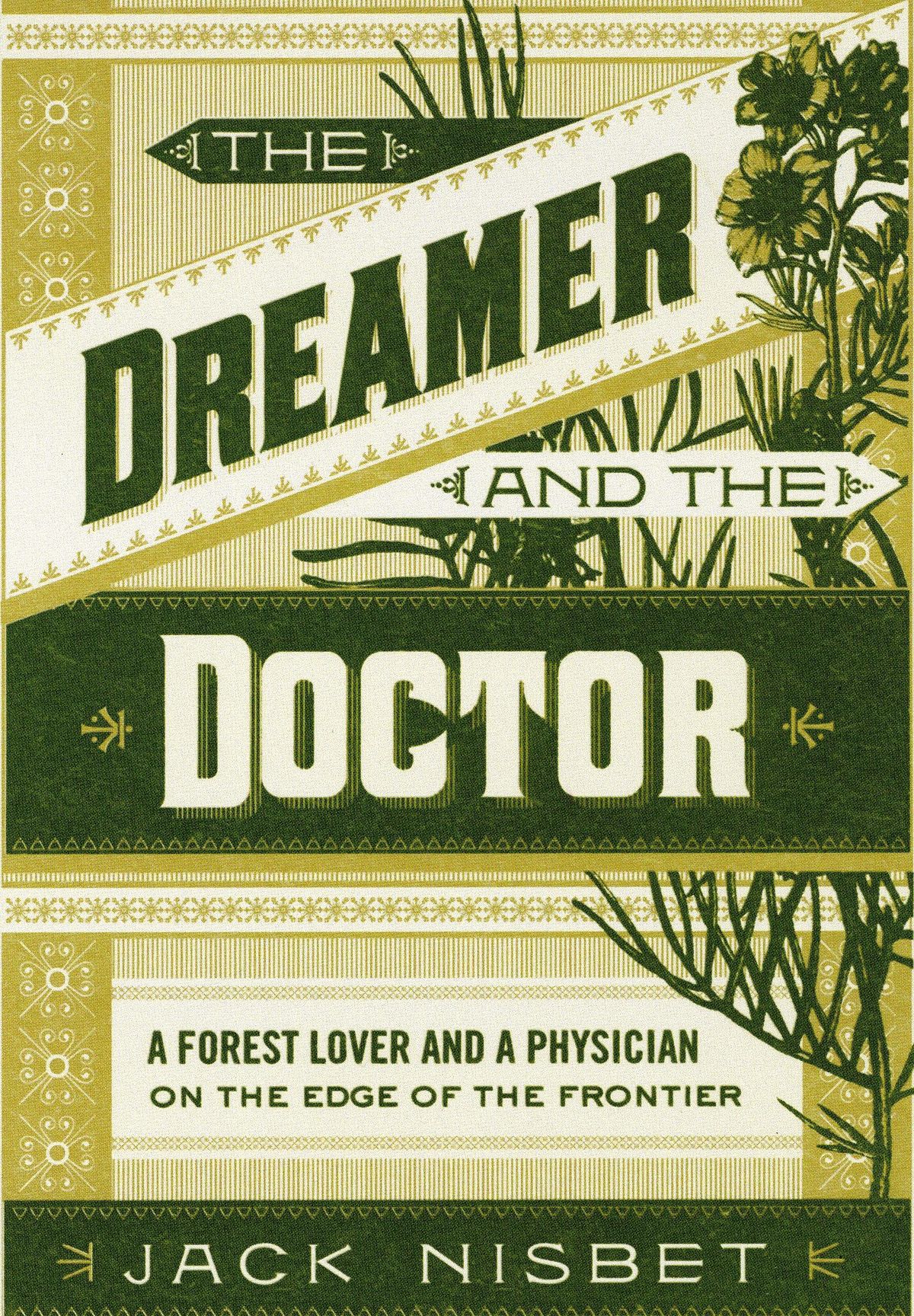Locally Writ: Using people to discover the history of a place

Local author Jack Nisbet’s most recent work, “The Dreamer and the Doctor,” chronicles the many adventures of John and Carrie Leiberg. Despite their humble introduction to the Northwest, homesteading in Idaho Territory, the Leibergs would eventually come to influence its development.
Although many of Nisbet’s books have centered around individuals of historical significance, he explained that his primary interest is in the overarching natural history of the Northwest.
Growing up in North Carolina, Nisbet developed an early fascination with natural history as older relatives encouraged him along the way. He moved west for college, and after moving to Chewelah in the 1970s, a series of opportunities landed him a spot writing a column on local plant and animal life for the local newspaper, the Independent.
Writing a weekly column without fail for 10 years, he said, served as an apprenticeship of sorts for his later work. And, realizing the resources he had amassed, he started to consider writing longer-form pieces on natural history.
“I didn’t think of my writing from a historical standpoint for a long time,” he said. But he quickly found his bridge into history when he began researching David Thompson, the British-Canadian explorer who would go on to map nearly 2 million square miles of North America.
But much like Thompson’s lengthy trek across the continent, the road proved less than easy-going; the work would be rejected by 10 publishers before succeeding.
Over the course of the next 20 years, Nisbet wrote and rewrote his history of Thompson countless times, all the while writing shorter essays on the seemingly endless list of characters he met along the way.
“That’s been my method ever since; I don’t see any end to the process,” he said. Twelve years after publishing the first Thompson book, Nisbet’s continuing research produced a second.
“I’m endlessly fascinated with where we live,” Nisbet said. “I’m much more interested in the landscape around us through time than I am with David Thompson, but he’s a wonderful window to get into it.”
Unfortunately, Nisbet explained, most of the available historical “windows” were white men simply because they were the ones who left journals behind for writers and researchers like Nisbet and his wife, Claire, to comb.
Eventually, it occurred to them that one way of diversifying their subjects would be to write about a husband and wife pair. Then, while researching John Leiberg, perhaps most remembered for his groundbreaking studies into the role of fire in forest ecosystems, the Nisbets started hearing more and more about his wife Carrie’s work and influence.
Twenty-five years before, Nisbet recalled, a friend in Sandpoint had told him “You should really look at Carrie Leiberg, she’s quite a character.” Then a fire ecologist, a plant ecologist and a wide range of other sources started mentioning the couple, so he decided to try.
The anecdotes were a start, but they needed documents: letters, journals, photographs. Plenty of documentation was available from John Leiberg, but it wasn’t until visiting the National Archive in Washington, D.C., that they realized the Leiberg collection included letters from Carrie Leiburg, as well.
They discovered that Carrie Leiberg was a family physician and a surgeon for the Northern Pacific Railroad in an area where no one else was. She was interested in politics to the point of becoming a candidate for political office in a time when women couldn’t even vote in most states. She was a pioneer through and through.
“We would know nothing about her except for these few letters that she wrote – that and meeting a descendent of hers made it enough that I could do this,” Nisbet said. Nisbet and his wife were thrilled to be able to finally write about a woman. “Even though he (John Leiberg) was an interesting guy and important, I think, there needed to be more to it … Carrie adds so much to the story in so many strange ways, ways that seem to play forward into our time.”
What most surprised Nisbet in his research was the juxtaposition of wilderness and physical isolation on the Leiberg homestead with the rise of train travel and a thriving postal system across the country.
“There was a real hunger to communicate that John and Carrie were feeling a lot of the time, so it was nothing to them to sit down and write a 20-page letter,” he said. “That instant scope in and scope out between being in close contact with people and then also being very isolated. It’s like they’re going backward and forward in time every day.”
He recalled instances where John Leiberg might be out researching in the wilderness, but then, coming to a post office he’d find that Gifford Pinchot, head of the United States Forest Service during the Theodore Roosevelt administration, was coming to visit him in a week’s time, “So he better get him his itinerary.”
The anecdotes, however, stretch far beyond a reasonable page count, and Nisbet expects that a second book might be inevitable.
After decades of practice, Nisbet is at his happiest in the middle of a project: “I do not enjoy turning a book in,” he said.
“A lot of writers spend all their time complaining about the process, but it’s really the process that gives you any sense of satisfaction or of performing the job. It’s a job.”
Nisbet will give a virtual presentation on the Leibergs for the Idaho Lands Council’s “Wild Idaho! Web Series” at 5:30 p.m. on Thursday. For information on how to register or view the presentation, visit idahoconservation.org/wildidaho.